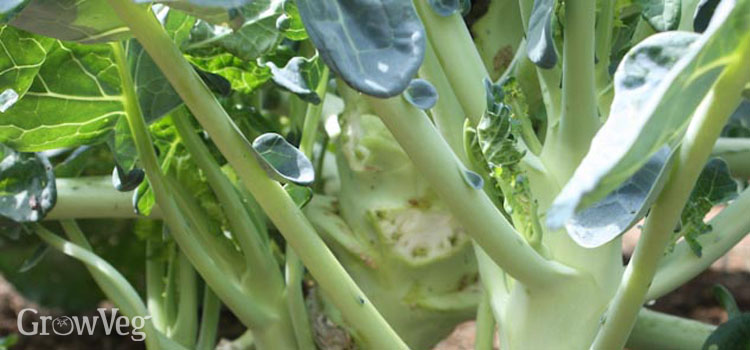Yes, ratoons is spelled correctly, and my garden is full of them. By midsummer most of my lettuces are ratoons, as are all of the cabbage and broccoli.
What is a ratoon? Derived from the Spanish word retoño (to resprout), ratoons are second crops that grow from the stumps or stubble of the first. This makes ratoon cropping different from a cut-and-come-again growth cycle, in which harvested leaves or stems are quickly replaced by new ones (chard and basil are prime examples). Ratoon crops regrow from the lowest part of the stem, or stump. Sugar cane and rice often produce sizeable ratoon harvests, as do some vegetables. The little savoy cabbages shown in the photo above were ready to harvest as ratoons five weeks after the main head was cut.
Choosing Ratoons
The best ratoon crops for your garden are those that enjoy a long season of suitable weather. Cooler climates hold great promise for ratooned cabbage, broccoli, watercress, and even scallions. Simply replant the bottom inch of onion (or young leek) with roots attached, and within a few weeks you will have a new plant.
In long, warm climates, heat-tolerant vegetables including okra, lima beans, and sweet peppers can be rejuvenated by chopping off their heads, ratoon style. When researchers in Oklahoma and Texas cut back spring-planted sweet peppers to 8 to 9 inches (20-24 cm) in late summer, the plants rebounded by producing more premium quality late-season fruits.
 This broccoli will resprout for a second, smaller, harvest
This broccoli will resprout for a second, smaller, harvest
The great thing about ratoon crops is that they require no replanting. All you need are a few simple techniques and a bit of patience.
- One of the keys to getting plenty of strong ratoons is to cut high on the stem when harvesting the first cabbage, broccoli head, or whatever, which leaves behind plenty of opportunities for latent basal buds to mobilize and start growing.
- Water and or fertilizer may be needed to kick-start new growth. Fortunately, the radically pruned plant is sitting atop a large root system, which may do a fine job of nurturing a ratoon crop without heavy feeding.
- As the new growth appears, I do think it’s a good idea to remove tattered old leaves to keep plants from wasting energy on them and to eliminate hideouts for slugs and snails.
- Ratoon cropping works the soil hard, so be sure to replenish nutrients and organic matter by digging in plenty of rich compost when the crop is finally finished.
How much will you get? Expect the second crop to be slightly less than half of the first by weight, but also expect it to feel like a lucky bonus, or lagniappe as they might say in Louisiana.
By Barbara Pleasant